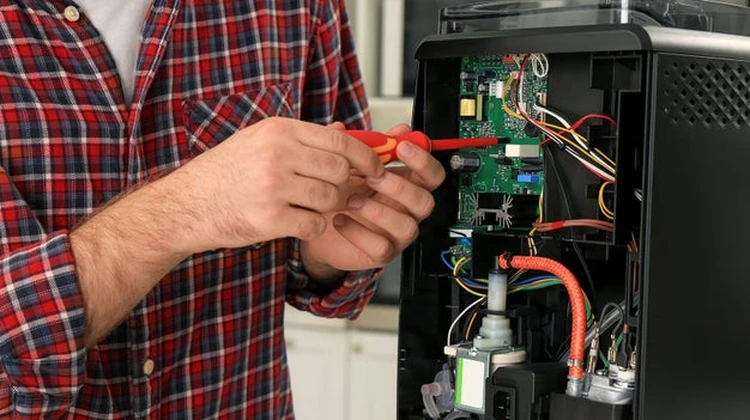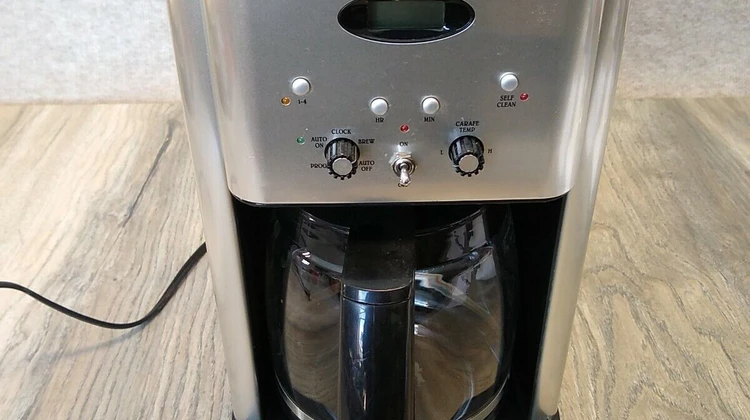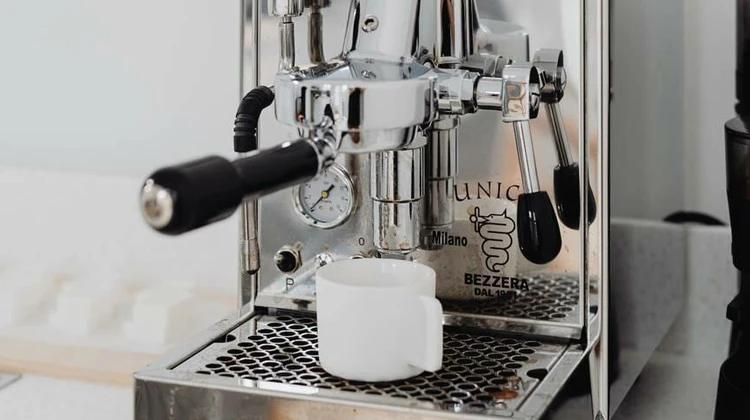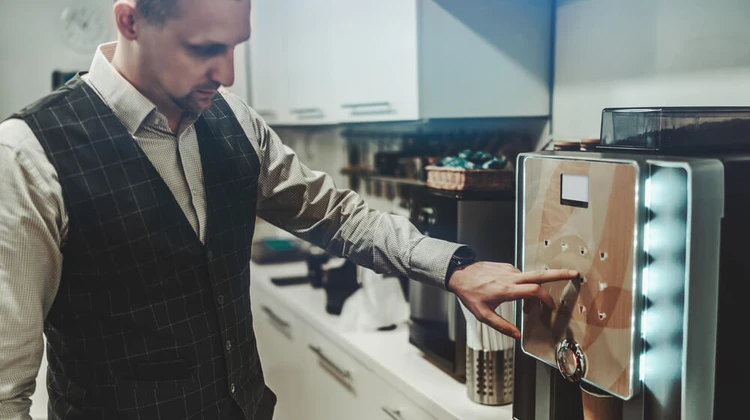Disclaimer: As an Amazon Associate, I earn commission from qualifying purchases.
Did you know that the average American drinks about 2.7 cups of coffee per day? Understanding how coffee makers work is not just a matter of curiosity; it’s a key to enhancing your kitchen efficiency and promoting sustainability.
Whether you’re a homeowner looking to upgrade your kitchen appliances or a kitchen enthusiast eager to perfect your brewing techniques, knowing the mechanics behind your coffee maker can make a significant difference.
The Basics of Coffee Makers
Coffee makers come in various types, each with its own unique brewing process. The most common types include drip coffee makers, espresso machines, French presses, and single-serve coffee makers. The evolution of coffee makers dates back to the 19th century, with the first percolators and vacuum brewers paving the way for modern designs.
According to the National Coffee Association, the coffee maker market has seen significant innovation over the years, driven by consumer demand for convenience and quality.
How Drip Coffee Makers Work
Drip coffee makers are among the most popular types due to their simplicity and efficiency. The process begins with pouring water into the reservoir. The water is then heated and pumped through a tube to the showerhead, which evenly distributes the hot water over the ground coffee placed in a filter. The water seeps through the coffee grounds, extracting the flavors and oils, and then drips into the carafe below.
For a deeper understanding, let’s break down the steps:
- Water is poured into the reservoir.
- The heating element warms the water to the optimal brewing temperature (around 195-205°F).
- The heated water is pumped through a tube to the showerhead.
- The showerhead distributes the water evenly over the coffee grounds in the filter.
- The water seeps through the coffee grounds, extracting flavors and oils.
- The brewed coffee drips into the carafe below.
According to Home Brewing publications, the key to a good cup of coffee from a drip coffee maker is the even distribution of water and the correct grind size of the coffee. It’s important to note that improper use can lead to hazards such as electrical malfunctions or water leakage, so always follow the manufacturer’s guidelines.
How Espresso Machines Work
Espresso machines operate on the principle of high-pressure extraction. The process involves forcing hot water through finely-ground coffee at high pressure, typically around 9 bars. The heart of an espresso machine is the portafilter, a handle with a filter basket that holds the ground coffee.
Here’s a step-by-step guide to how espresso machines work:
- Water is heated in the boiler to the optimal temperature (around 195-205°F).
- The ground coffee is tamped into the portafilter.
- The portafilter is locked into the group head.
- Hot water is forced through the coffee at high pressure.
- The extracted espresso flows into the cup.
Professional baristas emphasize the importance of tamping the coffee evenly and using freshly ground beans for the best results. Barista Magazine highlights that regular maintenance, such as cleaning the portafilter and descaling the machine, is crucial for consistent performance.
How French Presses Work
French presses use an immersion brewing process, which is simple yet effective. The process involves steeping coffee grounds in hot water for a specified time before pressing down a plunger to separate the brewed coffee from the grounds.
The science behind the French press involves the following steps:
- Coarsely ground coffee is placed in the French press.
- Hot water (around 195-205°F) is poured over the coffee grounds.
- The mixture is allowed to steep for about 4 minutes.
- The plunger is pressed down to separate the brewed coffee from the grounds.
Academic studies on coffee brewing have shown that the French press method can extract a richer flavor profile due to the longer contact time between the water and coffee grounds. However, it’s important to note that this method can also result in a higher sediment content in the final brew.
How Single-Serve Coffee Makers Work
Single-serve coffee makers, such as Keurig, have gained popularity for their convenience. These machines use pre-packaged pods or capsules that contain ground coffee. The process involves piercing the pod, forcing hot water through it, and then dispensing the brewed coffee directly into the cup.
The mechanism can be broken down as follows:
- The pod is inserted into the machine.
- The machine pierces the pod on both the top and bottom.
- Hot water is forced through the pod, extracting the coffee.
- The brewed coffee flows into the cup.
Market research reports indicate that single-serve coffee makers are highly popular due to their ease of use and quick brewing time. However, the environmental impact of the disposable pods has been a concern. Companies like Keurig have introduced recyclable pods and other sustainability initiatives to address this issue.
Maintenance and Cleaning Tips
Proper maintenance and cleaning are essential for the longevity and optimal performance of your coffee maker. Here are some practical tips:
- Regularly clean the water reservoir and carafe to prevent mineral buildup.
- Descale the machine every few months to remove limescale deposits.
- Clean the brew basket and filter regularly to remove coffee oils and residue.
- For espresso machines, clean the portafilter and group head after each use.
- Use manufacturer-recommended cleaning products for best results.
Manufacturer guidelines often provide detailed cleaning instructions tailored to specific models. Transparent pricing information for cleaning products can help ensure you’re using the right tools without overspending.
Troubleshooting Common Problems
Even the best coffee makers can encounter issues. Here are some common problems and their solutions:
- If your coffee maker isn’t brewing, check the water reservoir and ensure it’s properly seated.
- For weak coffee, try using a finer grind or increasing the amount of coffee.
- If the machine is leaking, inspect the seals and ensure all parts are tightly secured.
- For espresso machines, if the pressure is low, check the grind size and tamping pressure.
- If descaling doesn’t solve mineral buildup issues, consider using a water softener.
Expert opinions from coffee machine repair professionals suggest that regular maintenance can prevent many of these issues. However, for more complex problems, professional repair may be necessary.
Best Practices for Optimizing Coffee Makers
To get the best out of your coffee maker, consider the following tips:
- Use fresh, high-quality coffee beans.
- Ensure the correct water temperature (195-205°F) for optimal extraction.
- Adjust the grind size according to your brewing method.
- Maintain the proper coffee-to-water ratio (generally 1:16 or 1:18).
- Regularly clean and descale your machine.
Industry best practices recommend using filtered water to improve taste and reduce mineral buildup. It’s important to note that individual preferences can affect the results, so feel free to experiment with different brewing techniques.
Product Recommendations for Different Needs
Choosing the right coffee maker depends on your specific needs. Here are some recommendations:
- For budget-conscious buyers, a simple drip coffee maker like the Mr. Coffee 12-Cup Programmable Coffeemaker offers good value.
- For convenience, the Keurig K-Classic Coffee Maker is a popular single-serve option.
- For espresso lovers, the Breville Barista Express offers professional-grade features at a mid-range price.
- For those who prefer manual brewing, the Bodum Chambord French Press is a classic choice.
Consumer reports and reviews highlight the importance of considering factors like ease of use, brewing speed, and maintenance requirements when choosing a coffee maker.
Sustainable Coffee Making Practices
Adopting eco-friendly practices in coffee making can help reduce your environmental impact. Consider the following tips:
- Use reusable filters instead of disposable ones.
- Compost coffee grounds to reduce waste.
- Choose energy-efficient coffee makers.
- Opt for recyclable or biodegradable coffee pods.
Sustainable living publications emphasize the benefits of these practices, including reduced waste and energy conservation. Transparent information on the environmental benefits can help you make informed decisions.
The Science Behind a Perfect Cup of Coffee
Brewing a perfect cup of coffee involves understanding the science behind extraction, water temperature, and coffee-to-water ratio. The extraction process involves dissolving the soluble flavors from the coffee grounds into the water. The ideal water temperature for brewing is between 195-205°F, as this range optimizes the extraction of flavors and oils.
Scientific studies on coffee brewing have shown that the grind size plays a crucial role in extraction. A finer grind increases the surface area, allowing for faster extraction, while a coarser grind results in slower extraction. Balancing these factors can help you achieve the perfect brew.
Frequently Asked Questions (FAQs)
How long does a coffee maker typically last?
The lifespan of a coffee maker varies depending on the model and usage. On average, a well-maintained coffee maker can last between 5 to 10 years. Regular cleaning and descaling can extend its lifespan.
Can I use regular ground coffee in a single-serve coffee maker?
While some single-serve coffee makers allow the use of regular ground coffee with reusable filters, it’s important to check the manufacturer’s guidelines. Using the wrong type of coffee can result in poor extraction and clogging.
How do I descale my coffee maker?
Descaling involves running a solution of water and descaling agent (such as vinegar or a commercial descaler) through the coffee maker to remove mineral deposits. Follow the manufacturer’s instructions for the best results.
What is the ideal water temperature for brewing coffee?
The ideal water temperature for brewing coffee is between 195-205°F. This range ensures optimal extraction of flavors and oils from the coffee grounds.
How do I adjust the strength of my coffee in a drip coffee maker?
To adjust the strength of your coffee, you can change the coffee-to-water ratio. For stronger coffee, use more coffee grounds or less water. For weaker coffee, use fewer coffee grounds or more water.
How do I clean a French press?
To clean a French press, disassemble the parts and rinse them with hot water. Use a mild detergent and a soft brush to remove any coffee residue. Allow the parts to air dry before reassembling.
Conclusion
Understanding how coffee makers work is essential for enhancing your kitchen efficiency and promoting sustainability. By following the tips and recommendations provided, you can ensure that your coffee maker operates at its best, providing you with a perfect cup of coffee every time. Embrace these insights to elevate your coffee-making experience and contribute to a more sustainable kitchen environment.






